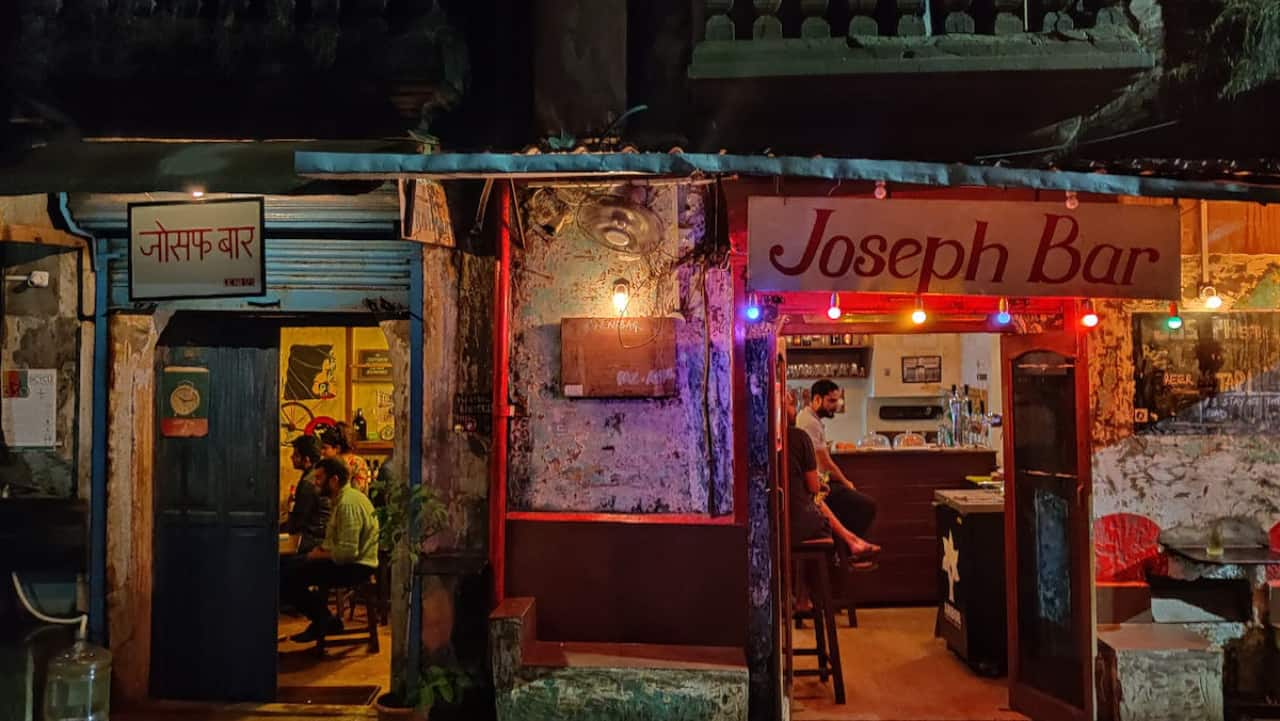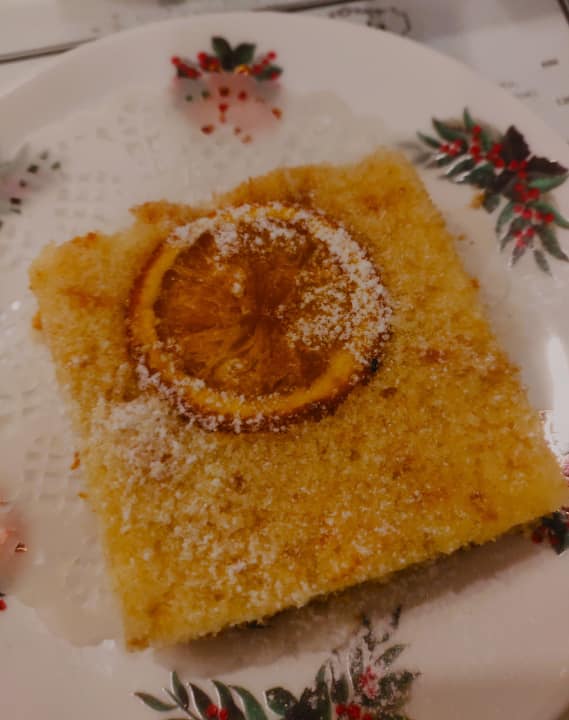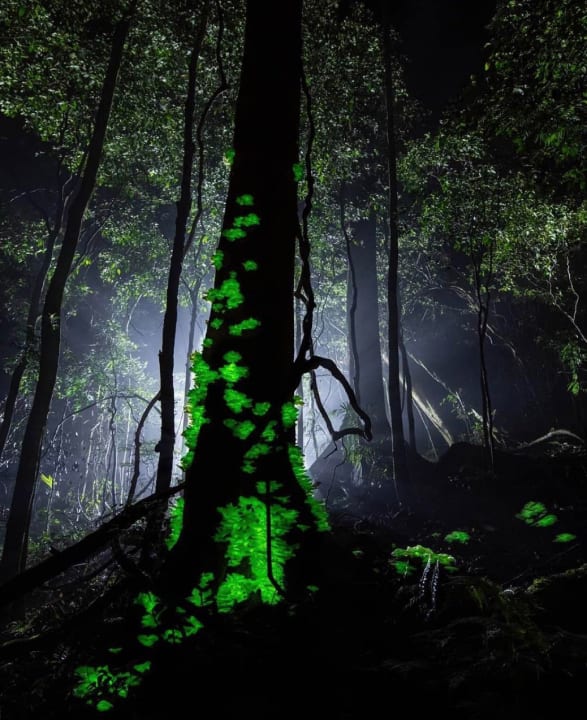



Goa has emerged as a year-long destination for travellers. Unfortunately, most travellers miss the nuances that make the Goan experience a truly unique one. My two years in Goa have revealed multi-layers of Goan society and experience. A guide to the Goan experience, then, for a traveller who is looking beyond the obvious.
Islands of Goa
There is more to Goa’s water experience besides the beaches. Its many islands are home to people who have worked tirelessly to preserve the very essence of their culture, their temples and churches, food, music and their natural heritage. Case in point: Divar Island, a once-secluded pilgrimage centre for Hindus devoid of any population. It was settled by the Portuguese when plague ravaged Old Goa. It is now an island with a few hundred residents, churches, temple ruins, fields and forested tracts, joined to the mainland by a ferry. Divar residents have resisted the building of a bridge and mobile towers to preserve the pristine quality of life here.
 Divar Island temple ruin (Photo by Deepali Nandwani)
Divar Island temple ruin (Photo by Deepali Nandwani)
My personal favourite is São Jacinto, one of the smallest islands in Goa. Settled along the banks of River Zuari, its built heritage includes an abandoned Portuguese-era lighthouse, some churches and chapels with unforgettable views of the river and old homes. The island is connected by a bridge and the only way you can explore it is on a day trip, as the locals have banned the sale of land or homes to outsiders. There are no hotels or homestays on the island.
The off-grid Cumbharjua is a natural habitat for crocodiles; Conco Island, at about 20 minutes sail from Palolem beach in South Goa, is known as the Monkey Island, so be careful of your possessions; Grande island is popular for scubadiving and dolphin sightings; the Butterfly Island nestles in a forest clearing with a beach shaped like a butterfly; while St Estevam Island is famous for the St Francis Xavier fort perched on a hillock.
Goa's Bazaars
The essence of Goa lies within its many markets or bazaars. There are some that tourists love; and others that locals throng. Panjim and Mapusa, which largely sell fresh vegetables and fruits, flowers, and other stuff useful for the home, are favourites. If you are here for a few months, head to these bazaars for your everyday needs. Most produce is fresh. Mapusa sells everything from fresh fish and local produce, from a pin to water storage tanks and home furnishings.
Both markets are steeped in history.
Mapusa was a trading hub in ancient Goa and derives its name from the word ‘Maap’ or measure. It was established in 1960, a year before Goa's liberation, as the first planned market with a separate lane for every kind of trader—jewellers, cloth merchants, potters, vegetable sellers, fish, home furnishings, and more. It is home to a lovely baker’s platform, where you can buy fresh local bread such as poi and kankanas.
New Panjim Municipal Market has unique murals by cartoonist and caricaturist Mario Miranda, depicting the vibrant, buzzing bazaar culture of Goa. If you want to buy local produce such as cashew fruit (very acidic), beautiful turmeric leaves used to make patoleo, a local sweet delicacy, wild berries that are foraged from the forests and sold in small batches, ambada (a souring fruit that is used to make the most amazing curry), Moira banana (a long, flat banana which is native to Moira village), the wonderful coconut vinegar, and Goan masalas such as Xacuti and Cafreal, which you can take home, head to this market.
 Mapusa bread market (Photo by Deepali Nandwani)
Mapusa bread market (Photo by Deepali Nandwani)
Margao Market, in south Goa, is a treasure trove for meat lovers who want to take home pickled Goan sausage (chouriso), snacks such as pinaca or guava cheese, rose tea or tea infused with dried rose petals, and locally produced cashew nuts. Stop over at Minerva Ice Cream, an old ice cream shop to enjoy its hand-churned ice cream.
Among my other favourite community markets is the one run by Saligao Institute, in the picturesque village of Saligao, with views of fertile fields and a Gothic church. It runs from October to June and empowers small businesses. The ‘Made in Saligao’ tag is much sought after and you can buy handcrafted candles and soaps, macramé art, home-made pickles and Irish cream, hand-painted accessories, and Goa’s local produce such as its native rice and millets.
The Tibetan market at Calangute is targeted at tourists but you can buy some interesting jewellery, provided you bargain hard.
 On the Saligao walk. (Photo by Deepali Nandwani)
On the Saligao walk. (Photo by Deepali Nandwani)
Goa’s trails and tours
Discovery tours take you to the innards of Goa, to destinations and spots you may never have heard of. Make It Happen’s Saligao Saunter explores the native architectural style of homes in the village, its natural heritage and local culture, including a popular tipple spot and an Indo-Portuguese family home, where we stopped over for native snacks and drinks.
Its newest Mulgao Folk Village and Coconut Farming experience explores life in a village abundant with nature, folk culture and pre-Portuguese homes. It offers an opportunity to partake in various stages of the farming process and production of virgin coconut oil at Mulgao Verde coconut farm.
Their Bioluminescence Forest Trail takes us deep within forests and lush woodlands, to explore the beauty of bioluminescent fungus, which illuminates the forest floor.
 On Tribal Walk Goa (Photo by Deepali Nandwani)
On Tribal Walk Goa (Photo by Deepali Nandwani)
My first experience with Soul Travelling was on a Tribal Food and Foraging trail in Sankhali or Sanquelim, accompanied by Masque’s chef Varun Totlani. A secret waterfall, a mysterious cave with unbeatable views of coconut trees, and a foraging experience with Suryakant Gaonkar, a local farmer and conservationist, defined the trail for me.
A preserver of natural biodiversity, Gaonkar has foraged for edible and medicinal plants from the forests around, many of them preserved as sacred groves. He has planted these fast-disappearing plants on his land as a repository for the future. Among the plants is Triphala, and the famous seven-ridge ladyfinger or Saathsheera bhindi found only in Goa. Lunch at his home is cooked in clay plots over firewood, which adds a smoky flavour to the food.
A unique beverage, which Gaonkar calls Lipstick, made from the Annatto seeds of a tropical fruit tree called Sindoor or Achiote, has a nutty flavour. The locals are also known to use it as a cosmetic because of the orange-pink colour the seed leaves on your hand.
Make it Happen’s other interesting trails include the Latin Quarter or Fontainhas Walk, a district established by the Portuguese as their residential and administrative headquarters, a nature trail through Charao, and a secret food and tavern trail in Panjim.
 Mo's Cafe and Bakery. (Photo by Deepali Nandwani)
Mo's Cafe and Bakery. (Photo by Deepali Nandwani)
Just as Kerala has its toddy shops, Goa has its taverns, where locals end their day with a drink of feni, music and gossip. In the past, there were different taverns for different people: One for the farm workers, another near the beaches for the fishermen, and a third for coconut pluckers and toddy tappers…
These have become relics of the past, but a few remain in the capital city of Panjim and other villages. Dry, rich bar food that can soak up the alcohol, such as chone-bhikna (boiled channa or horse gram and peanuts), boiled eggs, Toro Shiro (mangoes pickled in salt water), Kharo Bangdo (dry, salted mackerel), Goan sausage, and fish cutlets, is served with the feni.
 Cashew fruit in Panjim Market. (Photo by Deepali Nandwani)
Cashew fruit in Panjim Market. (Photo by Deepali Nandwani)
The feni is still soured from local distilleries, but some taverns also serve rum, beer and vodka. Experience company The Local Beat organises a Chol Kopo-ak (which translates to mean ‘Let’s go for a drink’) trail focused on the tavern culture, with tastings of 10-12 fenis, live music, and a meal. You will come back with a certificate that states you are a perfect Bebdo (or drunkard).
There are some accessible taverns that you can explore independently. Joseph Bar, in Panjim’s heritage Altinho district, is a local watering hole where you can drink Tambe Rosa (or feni infused with rose petals) besides craft gin and beer made in Goa. Log into Bars of Goa, an Instagram handle that celebrates local bars, to find a tavern or local bar in the neighbourhood you are in.
 Joseph Bar (Photo by Deepali Nandwani)
Joseph Bar (Photo by Deepali Nandwani)
Goa’s bakeries
The Portuguese introduced Goans to baking, and today the state has a plethora of bakeries which serve up traditional treats. Poi, Goa’s reason to smile every morning, resembles the Middle Eastern Pita bread and was once baked in large wooden hearths. Toddy was used for fermentation instead of yeast by the poders or the bread makers. Even today, in some of the mainland residential areas, you will see the poder’s men selling poi in the mornings on a cycle.
 Bolo Sans Raval at Confeteria, Goa. (Photo by Deepali Nandwani)
Bolo Sans Raval at Confeteria, Goa. (Photo by Deepali Nandwani)
Now, bakers have moved to electronic contraptions (very few traditional poders remain) and yeast is often used. You also get wheat and ragi poi.
Many bakeries and cafes are dishing out quintessentially Goan sweets and snacks. Confeteria 31 de Janeiro in the atmospheric Latin Quarters has a sweet little café with ceramic knick-knacks decorating the walls and tables. Their breads are still made in traditional wood-fired ovens. It also serves a range of traditional desserts such as Dodol (eggless cakes of rice flour, coconut and jaggery), Guava cheese, Doce (sweet lentil squares with coconut) and Bebinca, a layered dessert made with jaggery, coconut and spices.
 Guava Cheese
Guava Cheese
Also read: Best breads of Goa, beyond pao and poiee
Mr Baker 1922 in Panjim serves up croquettes and sausage pies. Café Central, again in Panjim, is famous for mushroom samosas. Jila Bakery in Loutolim is a quaint little bakehouse that serves unique chocolate éclairs resembling profiteroles.
The new-age Paderia Prazeres’s Pastel de Nata, or cream pastry, is Portuguese custard with a creamy filling in a crumbly crust. So popular is it that it sells out within an hour of the bakery opening. It is believed that Pastel de nata was first created 300 years ago in Jerónimos monastery in Lisbon.
Goa is also home to French bakeries and Japanese dessert bars and my recommendations are La Di Da in Porvorim for some good coffee and French desserts, and Momoko Goa in Panjim, which serves Japanese desserts.
 Paderia prezeres bakery (Photo by Deepali Nandwani)
Paderia prezeres bakery (Photo by Deepali Nandwani)
Goa's rivers, coasts and forests
Streams, rivers, and backwaters crisscross Goa, and its rainforests are protected habitats for wildlife. Watching dolphins along the coast is one of the most soulful experiences, but it is important to choose the right purveyor who offers ethical dolphin tours. Terra Conscious’s Dolphin Tours enables collaborative conservation and helps in the preservation of oceans and coasts. Their Marine Wildlife Watching Experience is conducted in collaboration with local boat operators and is a good way to sight the Indian Ocean Humpback Dolphin.
Goa Kayaking offers kayaking and canoeing journeys through the mangrove forests and backwaters, where you can indulge in a spot of bird-watching. Konkan Explorers yachting, cruises and nautical sports experiences are exploratory trips through Goan waters. Adventure Breaks’ moonlight kayaking trips are surreal and magical.
Footloose Journey’s Wild Goa Trails introduces people to many of Goa’s jungles, home to a rich biodiversity. They serve as wildlife corridors for tigers, which migrate from Maharashtra to Karnataka. On a Bhagwan Mahavir Wildlife Sanctuary Trail, I spotted Flame Throated Bulbuls and Malabar Trogon.
In south Goa, Cabo da Rama is a centuries-old fort ruin, where once soldiers marched. It can be reached after a 15-minute trek through a passage of coconut trees and lush greenery. The reward, breathtaking views of the Arabian Sea, is worth the trek. Descend the steps to Pebble Beach to soak your feet in crystal-clear water. Two-kilometres from the fort is the Cabo da Rama beach, and from there, a series of secluded beaches are a short drive away. Close to Cabo da Rama is The Cape Goa, a resort surrounded by palm trees and paddy fields, and with views of the Arabian Sea. Its café is very popular with tourists, so book a spot before you go.
 Bioluminescent fungi forest, Goa. (Photo by Deepali Nandwani)
Bioluminescent fungi forest, Goa. (Photo by Deepali Nandwani)
Goa heritage trails
Figueiredo House in the village of Loutolim, once home to Mario Miranda, was built in 1590, just 80 years after the Portuguese landed in Goa. It was an era when Emperor Shahjahan was yet to be born and the Taj Mahal wasn’t even a dream.
The Figueiredos were a family of diplomats and lawyers. You can book a stay in their heritage home, full of antique furniture, stained-glass windows, Belgian crystals and fine porcelain. You can also explore it on a day tour. The House offers high tea, lunch and dinner experiences, besides an experience that involves cooking and tasting Portuguese pastries.
South Goa has a host of heritage mansions open to exploration, such as the 450-year-old Braganza House in Chandor (with 28 balconies, biggest private library and Venetian crystal chandelier) and the 213-year-old Palacio do Deao in Quepem, built on the banks of Kushavati river, with a blend of Portuguese and Indian design elements.
A drive along the backwaters and over a cliff in the Candolim neighbourhood of northern Goa leads to the Aguada Prison complex. Established by the Portuguese to incarcerate freedom fighters, the scenic ocean views hide a grisly past. Very few prisoners, it is said, survived these prisons. After running it as a prison post-independence, the Goa government decided to convert it into a heritage complex.
Heritage walks, restaurants, cafes, and a new interactive gallery about Goa’s sea-trade routes and its history mark the Aguada experience. The jetty is often used for music concerts and the complex hosts fairs and fetes.
Discover the latest Business News, Sensex, and Nifty updates. Obtain Personal Finance insights, tax queries, and expert opinions on Moneycontrol or download the Moneycontrol App to stay updated!